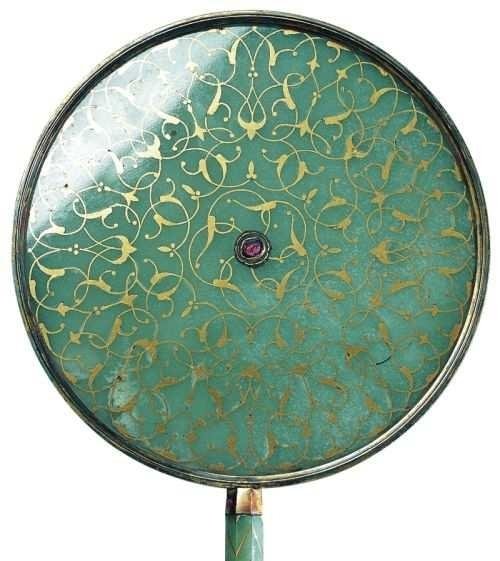From Byzantium to Istanbul
dal 7/10/2009 al 24/1/2010
Segnalato da
7/10/2009
From Byzantium to Istanbul
Galeries nationales du Grand Palais, Paris
The city of Byzantium, which became Constantinople and then Istanbul, is a place where cultures have met and mingled from the outset. An intersection for roads across both land and sea, as the excavations carried out in 2004 during tunnelling work for the new underground network have shown. The exhibition gives a chronological description of the main stages in the city's history and brings together about 300 objects from Turkish, French and international public collections.

curated by Nazan Ölçer
An exhibition organised by the Réunion des
Musées Nationaux and Istanbul Foundation for
Culture and the Arts (IKSV) as part of La Saison
de la Turquie en France (July 2009 – March 2010)
Exhibition under the distinguished patronage of Mr.
Nicolas Sarkozy, president of the Republic of France.
The city of Byzantium, which became Constantinople and then Istanbul, is a place where
cultures have met and mingled from the outset. An intersection for roads across both land and
sea, as the excavations carried out in 2004 during tunnelling work for the new underground
network have shown. The exhibition will give a chronological description of the main stages in
the city’s history. The site has been occupied since the Palaeolithic era and owing to the
Bosporus it became the theatre of major migration flows from the Balkans to Anatolia. Evidence
of a port on this site over the last eight thousand years is the sign of an eminent,
prosperous marketplace situated midway on a north-south trade route. The economy and everyday
life in Byzantium, which was founded by the Greeks in the seventh century BC, were conditioned
by its position. Roman occupation did not change its identity but the garrisons were a source
of activity.
In 330, after the scission between the Eastern and Western Roman empires, the city became a
capital named Constantinople in homage to the Emperor Constantine. Its position as a
commercial, political, military and religious centre was steadily consolidated until the late
Middle Ages. It is still an ethnic melting pot today. The modernised ancient city with its
port, new city walls, thoroughfares, forum, Hippodrome, palace, church of St Sophie was
completed by the Venetian and Genoese enclave at Galata. The “Latin invasion” during the
Fourth Crusade established Western rule between 1204 and 1261; after a period of restoration,
the empire gradually shrank around the city, which fell to Sultan Mehmed II in 1453.
Mehmed II the Conqueror wanted a city that would dominate East and West and be the capital of
a new Muslim empire. Under his reign and that of his successors – Beyezid II, Selim I and
Suleyman I the Magnificent – Christian buildings were converted to the customs of Islam,
starting with the Hagia Sophia. A sustained construction policy led to a new palace and a fort
on the eastern side of the Bosporus, as well as mosques and medressa. The face of the city
changed as the Ottoman Empire expanded.
However Christian communities remained and the city was still cosmopolitan.
In the temporal sphere, official ceremonies, processions, religious festivals, hunting
Mirror, end of 16th century, beginning of 17th century, jade, Ruby, Gold, Topkapi Palace Museum © Topkapi palace Museum
parties, the reception of ambassadors and grand princely events are abundantly attested and
illustrated. The everyday life of the people of Istanbul is also known through objects related
to the trades and commerce, music, land and sea transport, religious practices, etc.
The gradual rapprochement between Istanbul and the West brought about changes in military and
social customs. This evolution can be seen in clothing and in the extension of the city along
the shores of the Bosporus, where the new palaces of Dolmabahçe, Beylerbeyi and Çırağan were
built.
The exhibition brings together about 300 objects from Turkish, French and international public
collections. As an epilogue, a special place will be kept for the port of Theodosius, recently
discovered on the Yenikapi site in central Istanbul, a station in the planned underground
railway to link the European and Asian shores of the Bosporus.
General curator: Nazan Ölçer, director, Sakip Sabanci Museum, Istanbul
Exhibition catalogue : directed by Edhem Eldem, teacher and president of the History department of the
University of the Bosporus, Istanbul, and historian of the Ottoman Empire.
Exhibition design: Boris Micka
Press contact:
Florence Le Moing tel 01 40134762 email florence.lemoing@rmn.fr
Elodie Vincent tel 01 40134761 email elodie.vincent@rmn.fr
Opening 8 October 2009
Galeries Nationales
Grand Palais, Champs Elysées, Entrée Clemenceau
Opening Hours: Wed-Mon 10am-10pm
admission €11; concessions €8



